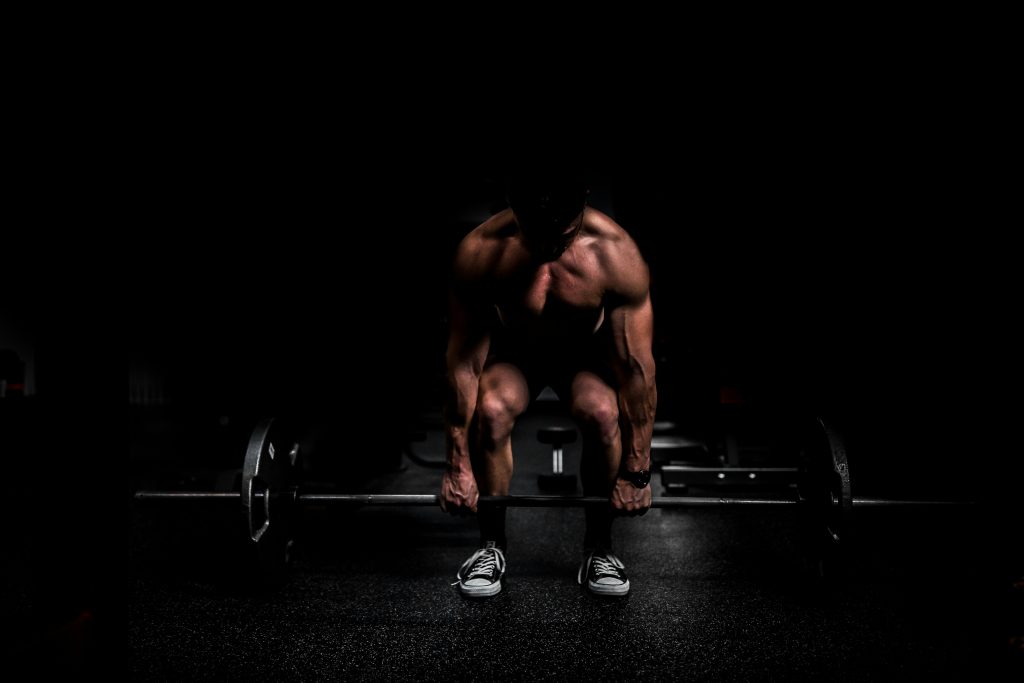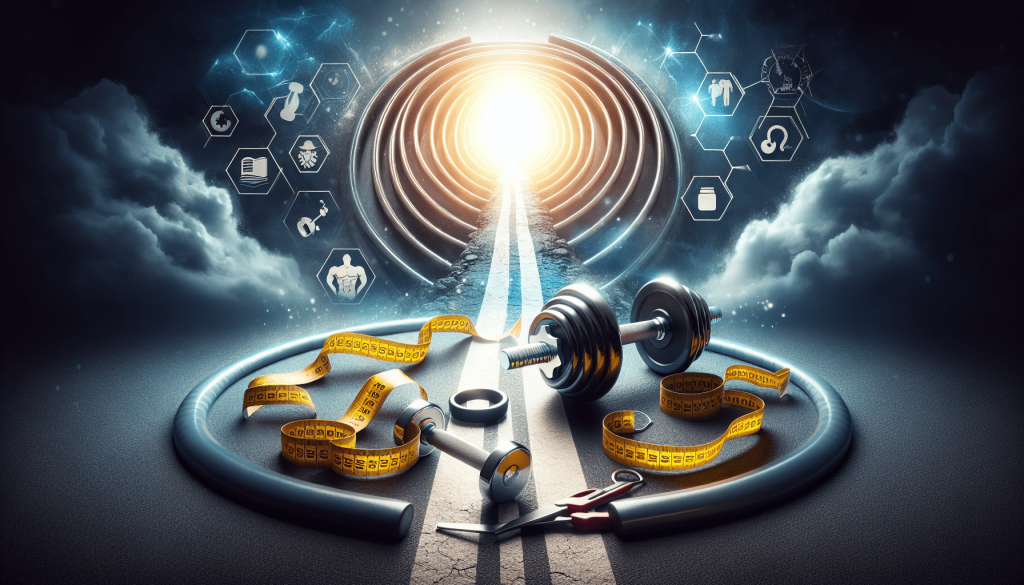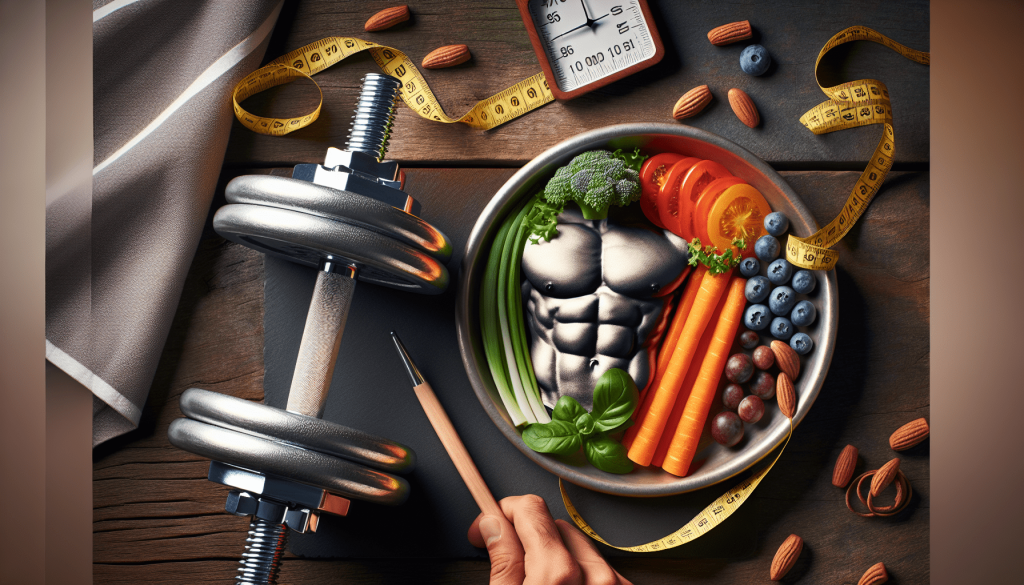So you’ve decided to embark on a journey towards sculpted abs and a strong core. That’s fantastic! But before you dive headfirst into crunches and planks, it’s important to separate fact from fiction. With so much information swirling around about how to achieve that coveted six-pack, it’s easy to get overwhelmed and fall prey to myths. In this article, we’ll debunk some common misconceptions about building a six-pack, ensuring that you have all the knowledge you need to make the most out of your fitness journey. Let’s separate the truth from the myths and get you closer to that chiseled midsection you’ve always dreamed of!

Myth 1: Spot Reduction
Spot Reduction is Not Effective
When it comes to obtaining a six-pack, many people believe that focusing solely on abdominal exercises will magically melt away the fat in that area. However, the truth is that spot reduction is simply a myth. Doing countless sets of crunches or sit-ups may strengthen your abdominal muscles, but it won’t necessarily result in visible abs. Fat loss occurs throughout the entire body, not just in specific areas. So, rather than wasting time on endless ab exercises, it’s essential to adopt a well-rounded approach that incorporates both strength training and cardiovascular exercises.
Combining Exercises for Better Results
To achieve that coveted six-pack, it’s crucial to engage in a variety of exercises that target multiple muscle groups. While ab exercises like planks, Russian twists, and leg raises certainly play a role in building core strength, they can’t do it alone. Incorporating compound movements such as squats, deadlifts, and push-ups into your workout routine will help maximize overall calorie burn and promote muscle growth. Remember, a strong core is important, but building visible abs requires a comprehensive approach that includes exercises for the whole body.
Myth 2: Ab Exercises are Enough
A Full-Body Approach is Essential
While ab exercises are undoubtedly important for strengthening your core, solely relying on them won’t give you the six-pack you desire. Building visible abs requires a full-body approach that addresses both muscle gain and fat loss. Working out the other major muscle groups, such as the legs, arms, back, and chest, is vital for creating a balanced physique and increasing overall calorie burn. By incorporating compound exercises that engage multiple muscle groups, you’ll not only enhance your overall strength but also stimulate your metabolism for more effective fat burning.
Importance of Cardiovascular Exercises
To reveal those hidden six-pack abs, cardiovascular exercises play a crucial role. Engaging in activities like running, cycling, swimming, or HIIT (High-Intensity Interval Training) helps increase your heart rate, burn calories, and ultimately reduce body fat. Without sufficient fat loss, your abdominal muscles will remain hidden beneath layers of adipose tissue. Combining cardiovascular exercises with a well-rounded strength training routine that focuses on different muscle groups will create the perfect environment for six-pack abs to emerge.
Myth 3: Crunches for Quick Results
Crunches Alone Won’t Give Instant Six-pack
Crunches have long been synonymous with abdominal training, and many people mistakenly believe that they hold the key to quick six-pack development. While crunches do activate your abdominal muscles, it’s important to understand that they are not a shortcut to instant results. Developing visible abs requires a combination of factors, including low body fat percentage, muscle definition, and overall core strength. Relying solely on crunches without addressing other aspects such as nutrition and full-body workouts is unlikely to produce the desired outcome.
Exploring Other Effective Ab Exercises
Although crunches are a valuable exercise for your abs, it’s important to diversify your routine to target all areas of your core. Exercises like planks, mountain climbers, Russian twists, and bicycle crunches engage different muscle fibers and can help in building six-pack abs. By incorporating a variety of ab exercises that challenge your core from different angles, you will stimulate muscle growth and enhance overall definition. Remember, consistency and progression are key factors in effectively developing your abdominal muscles.
Myth 4: Always Train Abs
Rest and Recovery are Crucial
While it’s tempting to believe that spending hours on end training your abs will speed up the process of achieving a six-pack, the truth is that rest and recovery are just as important as exercise itself. When you work out, you cause microscopic damage to your muscles, and they need time to repair and grow stronger. Overtraining your abs without giving them sufficient rest can lead to diminished results, injury, and fatigue. Aim for at least one or two days of rest per week to allow your muscles to recover and adapt to the training stimulus.
Overtraining can Hinder Progress
Overtraining occurs when the volume and intensity of your workouts exceed your body’s ability to recover adequately. While consistency in training is crucial, pushing yourself too hard without allowing enough time for recovery can hinder your progress and potentially lead to muscle strains or imbalances. Instead of spending every day solely focusing on your abs, incorporate rest days and alternate between different muscle groups to ensure balanced development and optimal recovery. Remember, six-pack abs are not built overnight, but through a combination of consistent effort, rest, and recovery.

Myth 5: Six-pack is Only About Exercise
Role of Nutrition for Visible Abs
When it comes to achieving visible abs, exercise alone is not enough. Nutrition plays a paramount role in shedding body fat and revealing the muscular definition beneath. No matter how much you work your abs, if your diet is high in processed foods, sugary drinks, and excess calories, those six-pack abs will remain elusive. To fuel your body for fat loss and muscle definition, adopt a balanced diet rich in lean proteins, whole grains, fruits, vegetables, and healthy fats. Prioritize portion control, and create a moderate caloric deficit to promote gradual and sustainable weight loss.
Importance of Caloric Deficit
To reveal your six-pack abs, you must create a caloric deficit, which means consuming fewer calories than your body needs for energy. This deficit forces your body to use stored fat as fuel, leading to weight loss and improved muscle definition. While it’s essential to fuel your workouts adequately, be mindful of portion sizes and avoid overeating. Aim for a gradual and sustainable weight loss of about 1-2 pounds per week, as rapid weight loss can result in muscle loss and a decrease in overall performance. Remember, nutrition and exercise go hand in hand in achieving visible abs.
Myth 6: Targeting Lower Abs Separately
No Separate Exercises for Lower Abs
One common misconception when it comes to six-pack abs is that there are specific exercises to exclusively target the lower abs. In reality, your rectus abdominis muscle, which is responsible for the six-pack appearance, is connected and contracts as a whole. While certain exercises may feel like they target the lower abs more, there is no way to isolate this region separately. To develop your lower abs, focus on exercises such as leg raises, reverse crunches, and hanging knee raises, while also incorporating comprehensive movements that engage the entire core.
Focus on Comprehensive Ab Workouts
Rather than fixating solely on lower abs, it’s crucial to engage in comprehensive ab workouts that target the entire core. Incorporating exercises like planks, side planks, stability ball rollouts, and woodchoppers will challenge all areas of your abs, including the lower region. Additionally, compound movements like squats and deadlifts, which engage the core for stabilization, further contribute to overall ab development. By taking a holistic approach to your ab workouts, you’ll build a strong and aesthetically pleasing midsection.

Myth 7: Only Young and Fit People Can Get a Six-pack
Age and Fitness Level are Not Barriers
Contrary to popular belief, age and fitness level are not insurmountable barriers to achieving a six-pack. While it’s true that younger and fitter individuals may have an easier time developing visible abs due to higher metabolic rates and lower body fat percentages, anyone can improve their abdominal definition with the right approach. By incorporating regular exercise, a balanced diet, and a commitment to consistency, individuals of all ages and fitness levels can make progress in their pursuit of six-pack abs. Remember, it’s never too late to start your fitness journey.
Adaptation and Progression are Key
Regardless of your age or current fitness level, the key to obtaining a six-pack lies in adapting your routine and progressing gradually. Begin with exercises that are appropriate for your fitness level and gradually increase the difficulty as your strength and endurance improve. Consistency is crucial, so commit to regular exercise and make adjustments to your routine as you progress. Whether you’re young or old, starting at a beginner or advanced level, the journey towards visible abs is a personal one that requires patience, dedication, and a positive mindset.
Myth 8: Only Men Can Have Six-pack Abs
Misconceptions about Gender and Abs
It’s time to debunk the long-standing myth that six-pack abs are reserved exclusively for men. While it’s true that men tend to have a higher natural muscle mass and lower body fat percentage than women, this doesn’t mean that women can’t achieve visible abs. Women have the potential to develop strong, defined abdominal muscles, but they may need to work harder due to hormonal differences and genetic factors. The path to six-pack abs is equally open to individuals of all genders who are willing to put in the effort and follow a comprehensive approach to fitness.
Women Can Also Achieve Visible Abs
Contrary to societal beliefs, women can achieve visible abs with the right training and lifestyle habits. Women’s bodies are capable of building lean muscle and burning fat, just like men’s bodies. Incorporating a mix of strength training exercises, cardiovascular workouts, and a healthy diet can help women develop toned abs. It’s essential to focus on overall body fat reduction and muscle development by adopting a well-rounded fitness routine. By staying consistent, setting realistic goals, and prioritizing self-care, women can confidently work towards a sculpted midsection.

Myth 9: Supplements for Magical Results
Supplements Alone won’t Give Six-pack
In the pursuit of a six-pack, many individuals turn to supplements hoping for a quick-fix solution. However, it’s important to understand that no supplement can magically grant you visible abs without the necessary foundation of exercise and nutrition. While some supplements may claim to boost fat burning or enhance muscle development, they are not a substitute for hard work, consistency, and a balanced lifestyle. Supplements can complement a healthy diet and exercise routine, but they should not be relied upon as the primary means of achieving a six-pack.
Supplements can Complement a Healthy Lifestyle
While supplements alone won’t give you a six-pack, certain ones can support your fitness journey when used judiciously. Protein supplements, such as whey or plant-based protein powders, can aid in muscle repair and growth when consumed as part of a well-balanced diet. Additionally, supplements like caffeine, green tea extract, or carnitine may have mild effects on metabolism and fat oxidation. However, it’s important to note that these effects are relatively small, and their impact on six-pack development is marginal compared to consistent exercise and proper nutrition.
Myth 10: Genetics Dictate Six-pack Potential
Genetics Play a Role, But Not a Limitation
Genetics undoubtedly influence our physical appearance, including the potential for visible abs. Some individuals may naturally have a higher tendency to store fat in the abdominal area or possess genetic advantages for muscle growth. However, genetics should never be seen as an insurmountable limitation. While some people may have a more straightforward path to a six-pack due to favorable genetic factors, anyone can improve their ab definition with focused effort, determination, and consistency. Remember, your genetics may set the starting point, but it’s your hard work that determines the destination.
Everyone Can Improve Ab Definition
Regardless of your genetic predisposition, everyone has the potential to improve ab definition through proper training and lifestyle choices. By adopting a comprehensive approach that includes a balanced diet, regular cardiovascular exercise, and targeted strength training, you can reduce overall body fat and enhance muscle tone. While some individuals may have to work harder than others, consistent effort, perseverance, and a positive mindset can lead to significant improvements in ab definition for individuals of all genetic backgrounds. Focus on the process, celebrate small victories, and trust in your ability to transform your physique.






